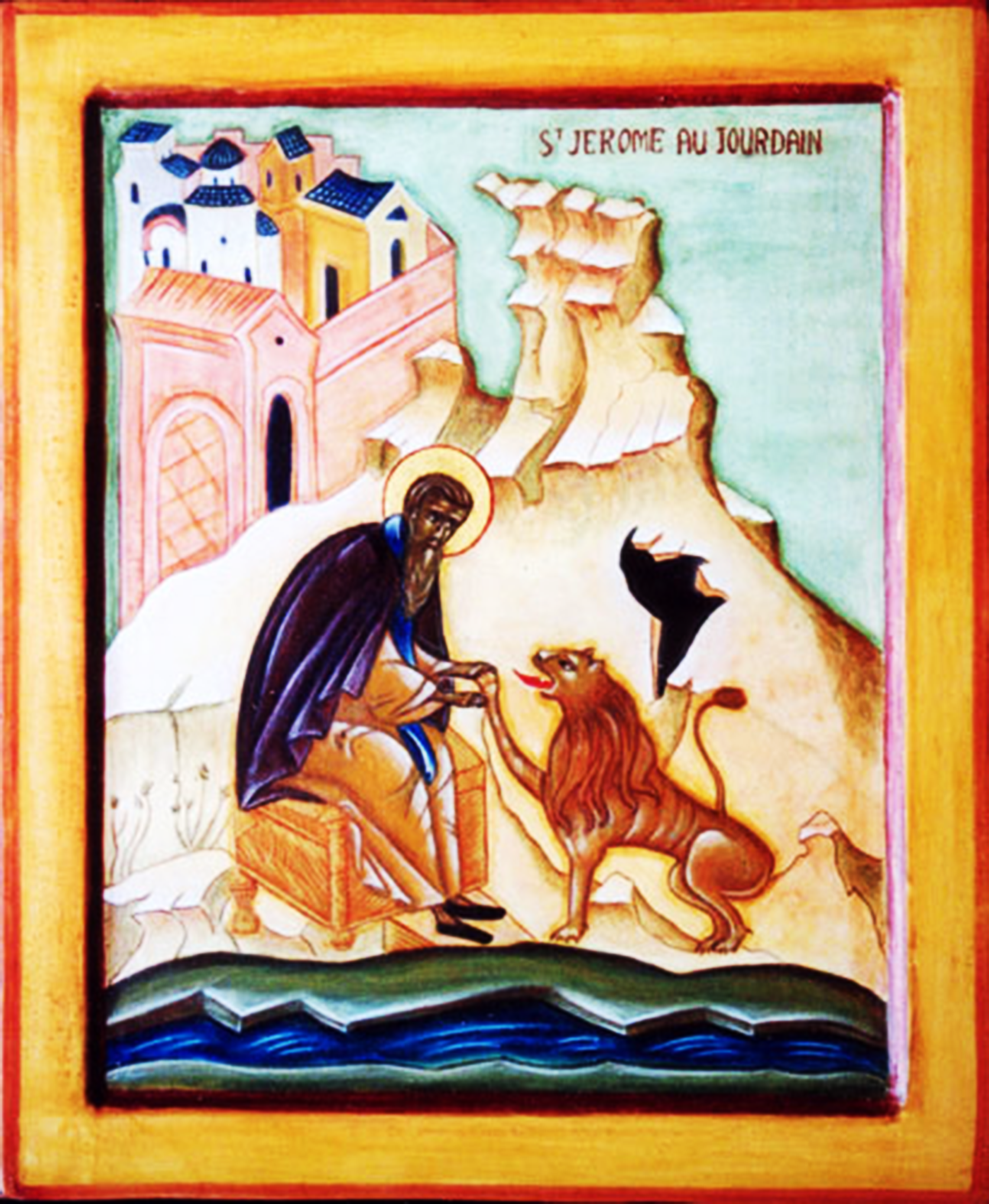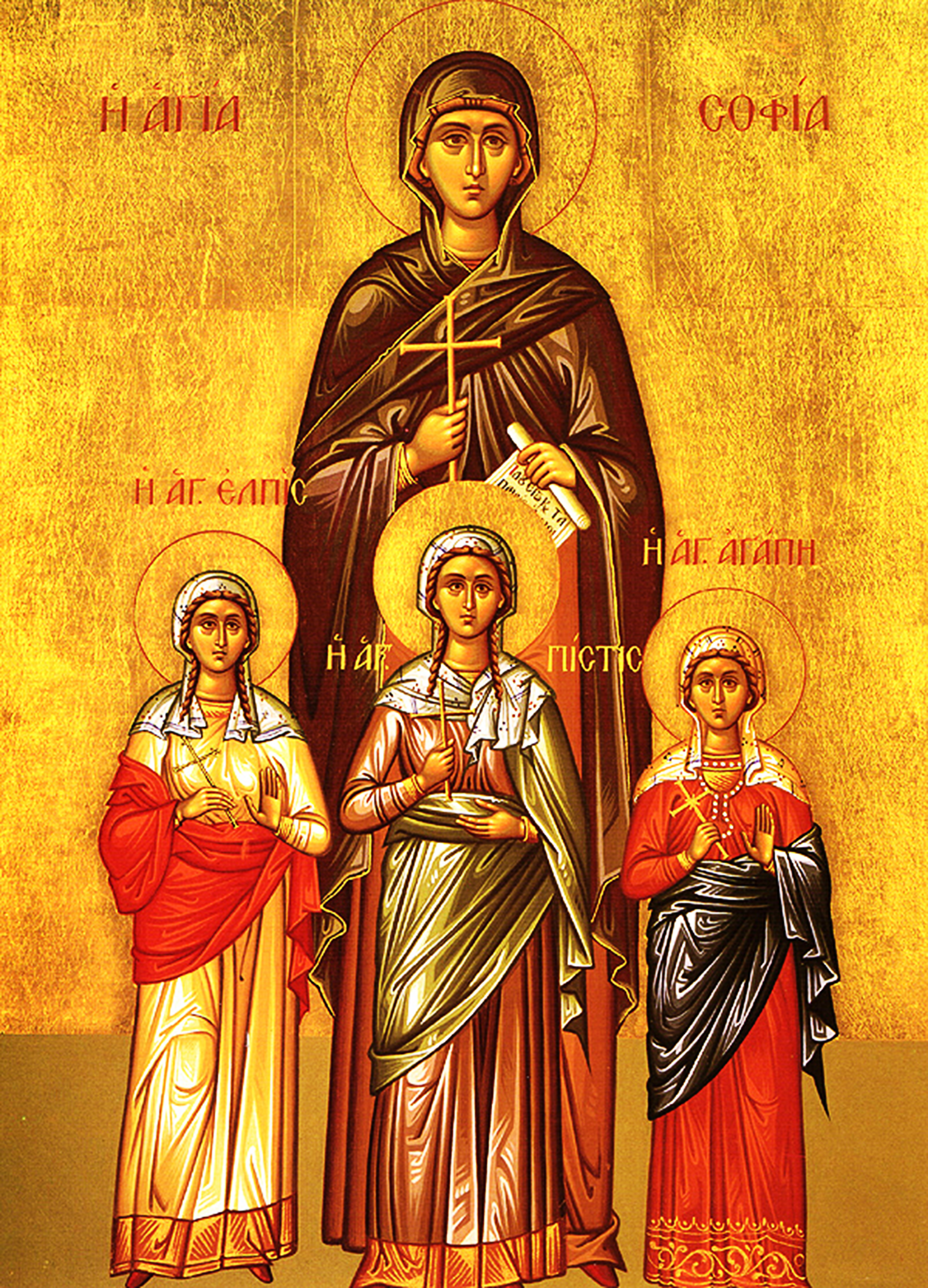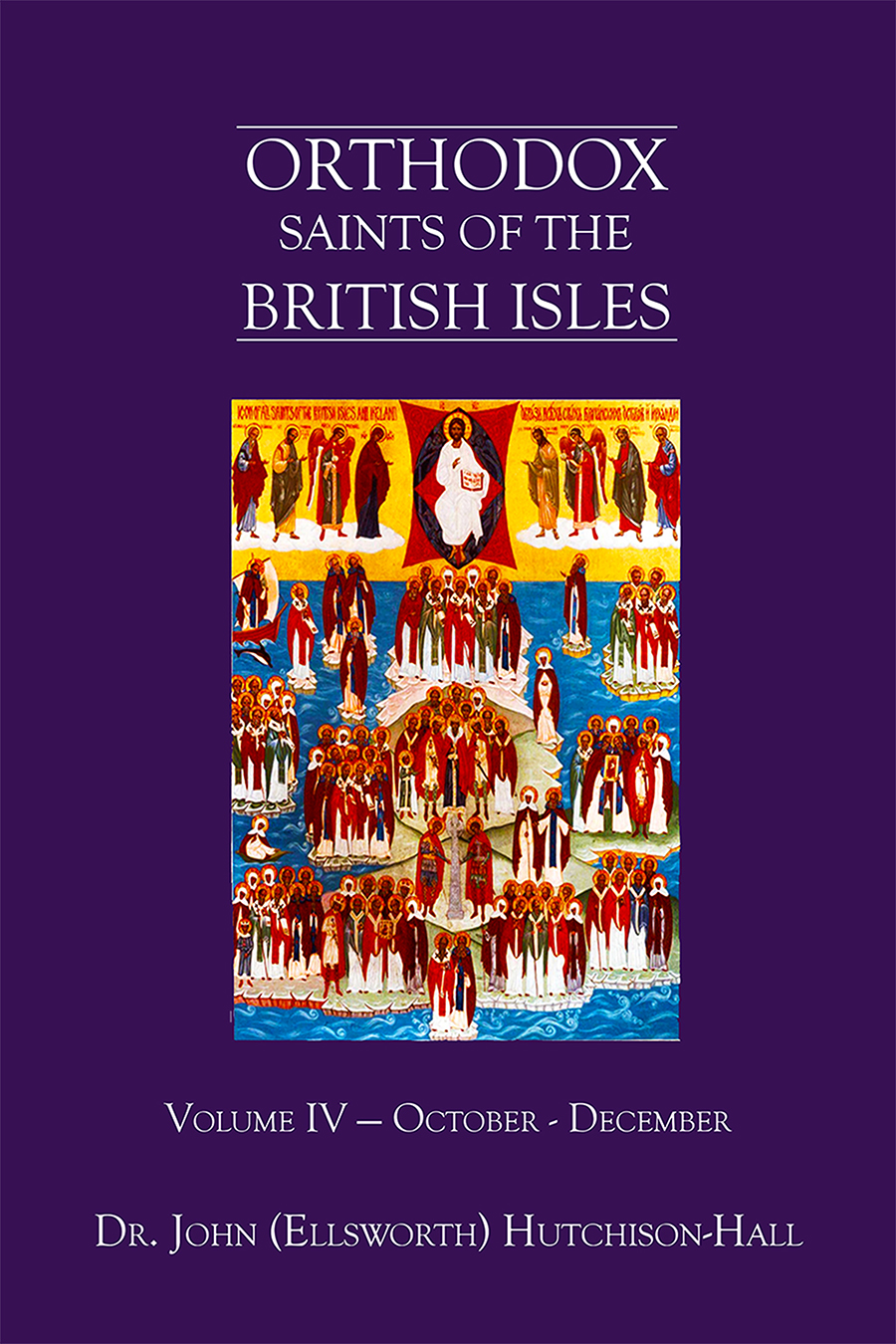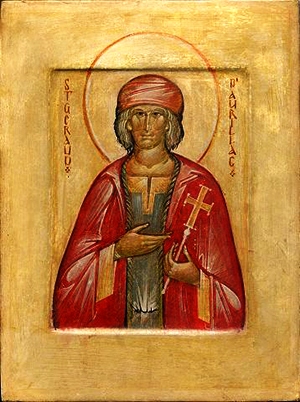
Orthodox Saints of the Pre-Schism
See of Rome
13th October (NS) — 30th September (OS) 2023
ANTONINUS of PIACENZA, (Third Century), a soldier martyred near Piacenza in Emilia-Romagna in present-day Italy. There are sources which claim he was a soldier of the Theban Legion (22nd September), though this theory doesn’t show up until several centuries after his martyrdom, nor is it mentioned in Martyrologium Hieronymianum, or any other contemporary Lives. St. Antoninus is the patron saint of Piacenza, and namesake of the Basilica of Sant'Antonino in Piacenza. A phial of blood said to be his, has been known to miraculously liquefy like that of St. Januarius of Naples (19th September). St. Antoninus has been sometimes confused with the sixth century pilgrim to the Holy Land and author of an Itinerarium (on that journey known as Antoninus of Piacenza, or the Anonymous Pilgrim of Piacenza.
ENGHENEDL of ANGLESEY, (Seventh Century), a church in Anglesey (Ynys Môn), Wales is dedicated to this native Welsh saint. There is no further information on him extant.
HONORIUS of CANTERBURY, St. Honorius was a monk at the monastery of St. Gregory the Dialogist (3rd September) in his native Rome when he was selected to be a member of St. Augustine of Canterbury’s (27th May) mission to the Anglo-Saxons. St. Honorius succeeded St. Justus of Canterbury (10th November) as the fifth Archbishop of Canterbury. As Archbishop, he consecrated St. Ithamar of Rochester (10th June), the first native English bishop, for the See of Rochester. St. Honorius reposed in 653, the last of the Gregorian missionaries. He was buried in the west porch of the monastery of SS. Peter and Paul (later St Augustine's) in Canterbury. His relics were translated in 1091 to a new tomb, and at about this time a Life was written by Benedictine hagiographer Goscelin [of Canterbury] († after 1107).
JEROME, Eusebius Hieronymus Sophronius was born at Stridon in Dalmatia (Croatia). After studying in Rome, he travelled in Italy and Gaul (France) and lived for about five years in the Holy Land as a hermit. St. Jerome returned to Rome where he was ordained to the priesthood and served as an assistant to Pope St. Damasus (11th December). Following the repose of St. Damasus, St. Jerome returned to the Holy Land, settling in Bethlehem, where he founded several monasteries which were headed by St. Paula of Rome (26 January) and then her daughter St. Eustochium (28 September). He spent the rest of his life in Bethlehem working on the Vulgate Bible and writing commentaries on the Holy Scriptures. St. Jerome reposed in 420.
LAURUS (LERY), (Seventh Century), one of the Breton saints who more or less Christianised Brittany. St. Laurus also founded a monastery in the area that is now known as Saint-Léry.
LEOPARDUS the SLAVE, a slave-servant in the household of the Emperor Julian the Apostate (r. 361–363). It is believed St. Leopardus was martyred in 362 at Rome.
MIDAN (NIDAN) of ANGLESEY, although no reliable information on St. Midan survives, it is believed he lived in Anglesey (Ynys Môn) in Wales and reposed in the early part of the seventh century.
SOPHIA, mother of the virgin-martyrs Faith, Hope, and Charity (1st August) who were martyred during the reign of the Emperor Hadrian (r. 117–138). St. Sophia was permitted to take the bodies of her daughter for burial, after which she spent the next three days praying at their graves then she reposed peacefully.
TANCRED, TORTHRED, and TOVA, Martyrs of Thorney Abbey, according to the Croyland Chronicle, SS. Tancred, Torthred (men) and Tova (a woman) were among those martyred by the Danes in 870 at Thorney Abbey in Cambridgeshire, England. Their relics were included in those translated to Winchester by St. Ethelwold of Winchester (1st August) in the tenth century. Nothing else is known about these martyrs.
URSUS and VICTOR, Martyrs of the Theban Legion, SS. Ursus and Victor were members of the Theban Legion (22nd September). They managed to escape the martyrdom of most of their comrades, however, they were captured soon after and martyred as well.
Get your copy of Orthodox Saints of the British Isles today.
Available at Amazon or your favourite e-bookstore.
BERTHOALD of CAMBRAI, (Seventh Century), the fifth Bishop of Cambrai-Arras, about 50km / 30mi south of present-day Lille, France.
COLMAN of STOCKERAU, an Irish or Scottish monk who, when travelling in 1012, through Austria on his way to the Holy Land, was arrested as a spy. As he did not speak German, St. Colman was unable to defend himself against the charges. St. Colman was then tortured and hanged with criminals in Stockerau near Vienna. Miracles were worked at his grave and he was quickly venerated as a saint. St. Colman is one of the patron saints of Austria.
CÓEMGEN (COMGAN) the MONK, (Eighth Century), the son of Kelly, Prince of Leinster, Ireland, brother of St. Kentigerna (7th January), and uncle of St. Fáelán (Fillan) of Cluain Móescna (9th January). Following the death of his father he travelled, along with his sister and nephew (and possibly others) to Scotland where he established a monastery at Lochalsh, near Skye, in the Inner Hebrides serving as its first Abbot. St. Cóemgen lived a long and most holy life at Lochalsh, and following his repose his nephew, St. Fáelán, enshrined his relics at Iona.
FAUSTUS, JANUARIUS, and MARTIAL, three martyrs in Córdoba (southern Spain), whom the Roman Christian poet Prudentius (†413) called ‘The Three Crowns of Córdoba’. SS. Faustus, Januarius, and Martial were subjected to heinous torture and then burnt alive towards the beginning of the Diocletianic Persecution (303–313).
FYNCANA and FYNDOCA, (Date Unknown), the Aberdeen Breviary lists SS. Fyncana and Fyndoca as Scottish martyrs on this date, however no further information on these saints remains extant.
GERALD of AURILLAC, all that is known about St. Gerald is from a Life by St. Odo of Cluni who had never met St. Gerald, and there are no primary sources extant. St. Gerald was a Count of Aurillac in Gaul and though his greatest desire was to be a monk, his noble obligations impeded this. Therefore, following the advice of his friend Bishop Gausbert of Rodez, St. Gerald lived a life as close to monasticism as possible in the world, even founding a monastery and church on his estate. He reposed in 909, and many miracles have been attributed to his intercession.
REGIMBALD (REGINBALD, REGIMBAUT, REGIMBEAU) of SPEYER, received monastic tonsure at St. Ulrich's and St. Afra's Abbey (Kloster Sankt Ulrich und Afra) in Augsburg, Bavaria (southern Germany). He later spent time at the Abbey of the Theotokos and St. Sebastian (Kloster Heiligen Maria und St. Sebastian) in Ebersberg about 80km / 50mi south-east of Augsburg, before being chosen in 1022 to serve as the Abbot of Lorsch, in the present-day German state of Hesse. In 1032 St. Regimbald was consecrated the twenty-ninth Prince-Bishop of Speyer in the present-day area of the German states of Rhineland-Palatinate and Baden-Württemberg. St. Regimbald reposed in 1039.
ROMULUS (REMO) of GENOA, a noted theologian and early Bishop of Genoa (north-west Italy). St. Romulus reposed circa 641, at the coastal town of Matuziano 113km / 70mi to the south-west of Genoa. Matuziano later came to be called San Remo after him. No further information on St. Romulus is extant.
SIMBERT (SIMPERT, SINTHERT) of AUGSBURG, following the completion of his studies at Murbach Abbey in Alsace (north-eastern France), St. Simbert received monastic tonsure there, and in time was elected its Abbot. In 778 St Simbert was appointed the fourteenth Prince-Bishop of Augsburg, Bavaria (southern Germany) by Charlemagne, King of the Franks (r. 768–814). St. Simbert ruled that See, while remaining Abbot of Murbach until his repose circa 809. St. Simbert is one of the patron saints of the Roman Catholic Diocese of Augsburg.
VENANTIUS, a fifth century Abbot of the Abbey of St. Martin of Tours (abbaye de Saint-Martin de Tours) in Tours (west-central France).
Prior to the Schism the Patriarchate of Rome was Orthodox, and fully in communion with the Orthodox Church. As Saint John of Shanghai and San Francisco +1966 said “The West was Orthodox for a thousand years, and her venerable Liturgy is far older than any of her heresies”.
Details of British Saints excerpted from Orthodox Saints of the British Isles.
Details of continental saints from these sources.
In many cases there are several spelling versions of the names of saints from the British Isles. I use the Oxford Dictionary of National Biography version as the primary version with the more prevalent version in parenthesis e.g. Ceadda (Chad) of Lichfield.




